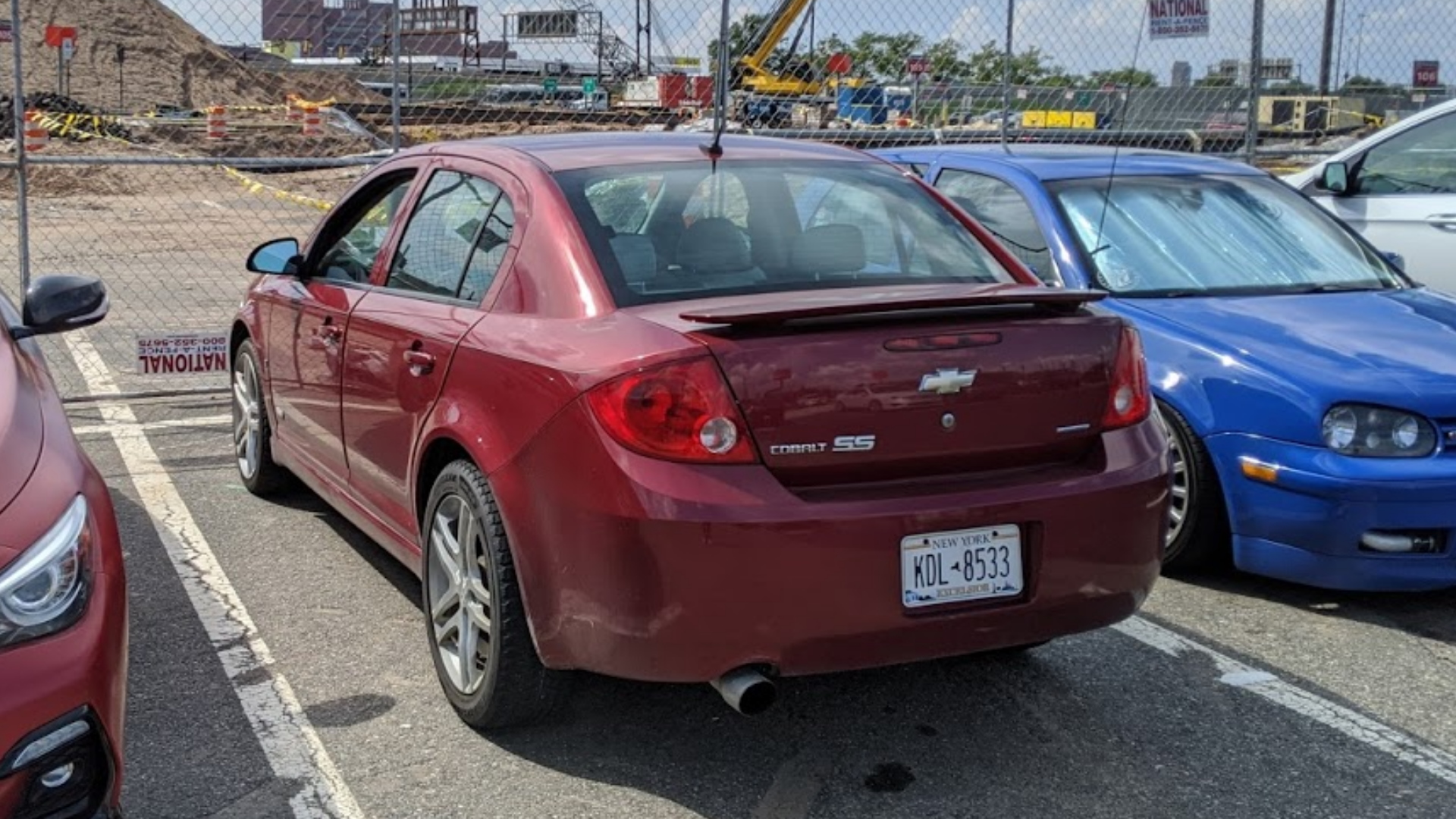

We may earn revenue from the products available on this page and participate in affiliate programs. Learn more ›
My 2009 Cobalt SS Turbo needed a little work. Pretty soon after I bought it, I ordered a tune from ZZPerformance, supposedly good for an extra 40 horsepower and 80 pound-feet of torque. Before I installed this tune, I took the car out for a spin. It started breaking up under boost pretty bad. I remembered my brother’s BMW 335i did this once as well, so I went down to the auto parts store and picked up a new set of iridium plugs. After throwing those in—which was a very quick job, unlike in the 3 Series—I went for another ride and that issue was fixed.
With the car now running well, I put the re-flashed ECU in the car. I also bought the improved General Motors MAP sensors that came with the original Stage 1 kit GM offered with the car, as they’re apparently much better than the stock units. This was all reasonably easy, and after a restarting process that took about 40 minutes, the car was ready for a shakedown.

You know how I said the car didn’t torque steer that much before? It does now. It’s also very fast. Boost hits around 22-24 psi, it will spin the tires in second gear. It’s a lot. I was worried all of this new power might compromise my reliability. However, I wouldn’t know until I actually drove the car.
With my girlfriend flying in soon, I decided to take the Cobalt on a 320-mile round trip from my home to the airport. I do consider myself a gambling man, however, breaking down on I95 because I wanted to test out my new project car is not a good look. Regardless, on the short 20-30 mile test-drives I had done before, I hadn’t sensed and issues with the car. Therefore, I decided to do it.
An Actual Sleeper
I remember watching Top Gear, and the hosts would always call a car like an M5 a sleeper. It’s really not. A Chevy Cobalt, on the other hand, definitely is. Countless people on the highway—peons!—definitely thought they could have their way with the frumpy-looking Cobalt sedan, however, this was not so. Thanks to my new-found power, the Cobalt is now quicker than my brother’s Focus ST, which is not a slow car. Putting your foot down in third will get you going much faster than you anticipate, sometimes a little alarmingly so.
I’m not used to the smooth arrival of turbocharged power, so without that naturally aspirated, “I just floored it” jolt, something doesn’t quite seem right.
Sadly, that power comes at a cost to fuel economy. Under boost, the Cobalt absolutely drinks. Its relatively small 13-gallon fuel tank also doesn’t alleviate any anxiety. I certainly could’ve done the whole 320-mile trip on one tank of gas, but just barely. That being said, the Cobalt’s little onboard computer did claim I got just over 30 miles-per-gallon the whole time, which is pretty good considering I wasn’t taking any fuel-saving precautions.

Despite my range anxiety, I made it down to Newark Airport without any issues to speak of. The car definitely needs an alignment—it gets a smidge shaky at the top end—but it wasn’t a worry-inducing sort of vibration. The older tires on the car also likely had something to do with that.
As far as interior comfort on this long trip, again, I’m not sure where all of these anti-GM complaints come from. The seats in the Cobalt are great, the AC blows cold, the auxiliary input works, as does the cigarette lighter to charge my phone. I put the car into fifth gear, put on an audiobook, and I was comfortable the entire trip. The car rides great, the steering gets nice and heavy when you’re cruising, I have absolutely no complaints.

There’s just something so picturesque about Newark Airport. Is it the chain-link fence? The massive piles of excavated earth, combined with derelict heavy machinery and large sheets of thin plastic? I’m not sure.
Once the flight landed and she got all of her stuff, we opened the trunk to the Cobalt to find an incredible amount of space. I suppose I hadn’t had the need to put anything back there yet, but I was very surprised about how much room I had. The rear seats also fold down for even more storage area. You could fit a lot of stuff in this car. Oh, also I was in Newark—I’m originally from New Jersey—so I stopped for a hot dog or three at Rutt’s Hut.


After devouring three hot dogs in about as fast as an Indy pit stop, I started my journey back home. It was, again, comfortable and uneventful. I stopped for gas about three-quarters of the way through the trip, checked around the car to make sure everything was still peachy, and drove the rest of the way home with no problems. I also found a digital coolant temp readout in the Cobalt’s info menu, which is nice as the car has no actual temp gauge. It does have a real boost gauge, however. Priorities.
So there you have it. The $4,700 Cobalt is still chugging along. I still like it a lot, it’s still running like a top. It’s been a solid purchase.
On a personal note, many thanks to all of you who sent me emails, especially the Cobalt SS owners. It’s nice to see other people who know what this thing is and appreciate it.
Still want to tell the author how he bought junk? Send him an email: peter@thedrive.com